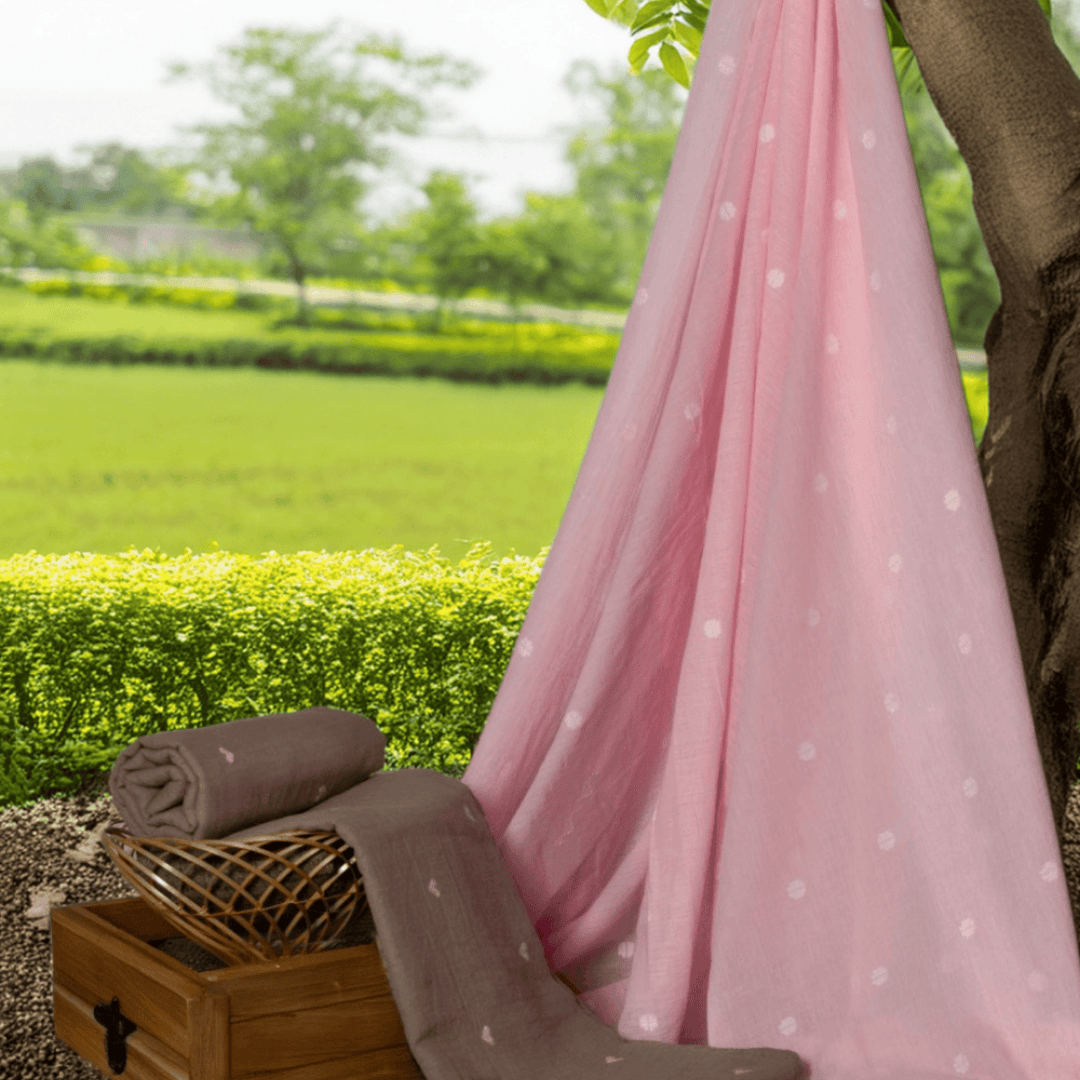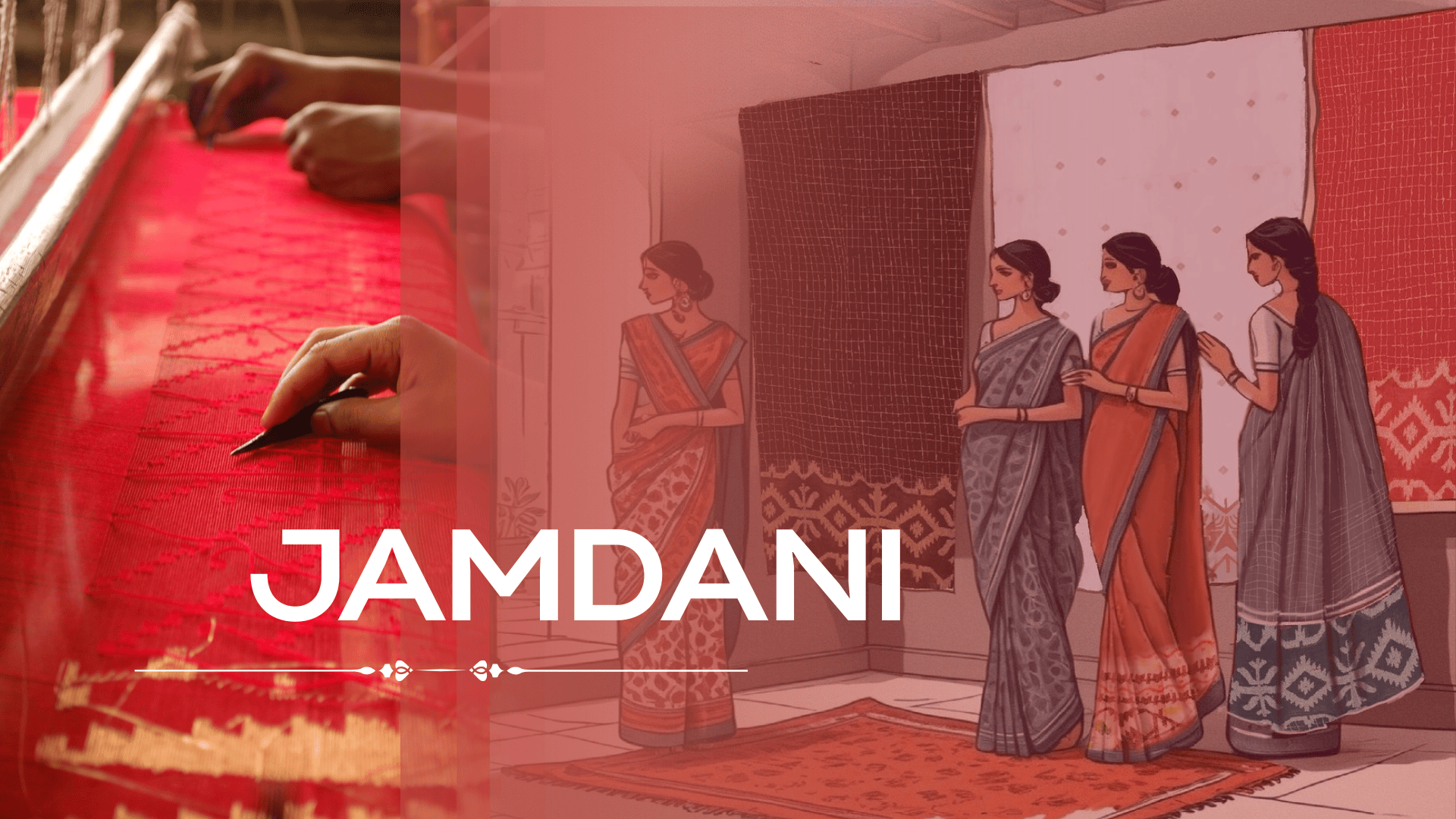
Jamdani Magic: Why This Weave Is UNESCO-Recognized As Cultural Heritage

In the realm of textiles, few crafts command as much reverence and awe as Jamdani. This exquisite handloom tradition, originating from Bengal, is not just a fabric; it's a living poem woven into thread, a testament to unparalleled skill and artistic vision.
Delicate, ethereal, and steeped in history, this textile is a masterpiece of weaving artistry. Its motifs are not embroidered or printed — they are woven directly into the fabric, making Jamdani textile, one of the most labor-intensive and breathtaking crafts in the world.
It’s no surprise that UNESCO recognized Jamdani in 2013 as an Intangible Cultural Heritage of Humanity. But what makes this weave so special? Let’s unravel its story.
What Is Jamdani?
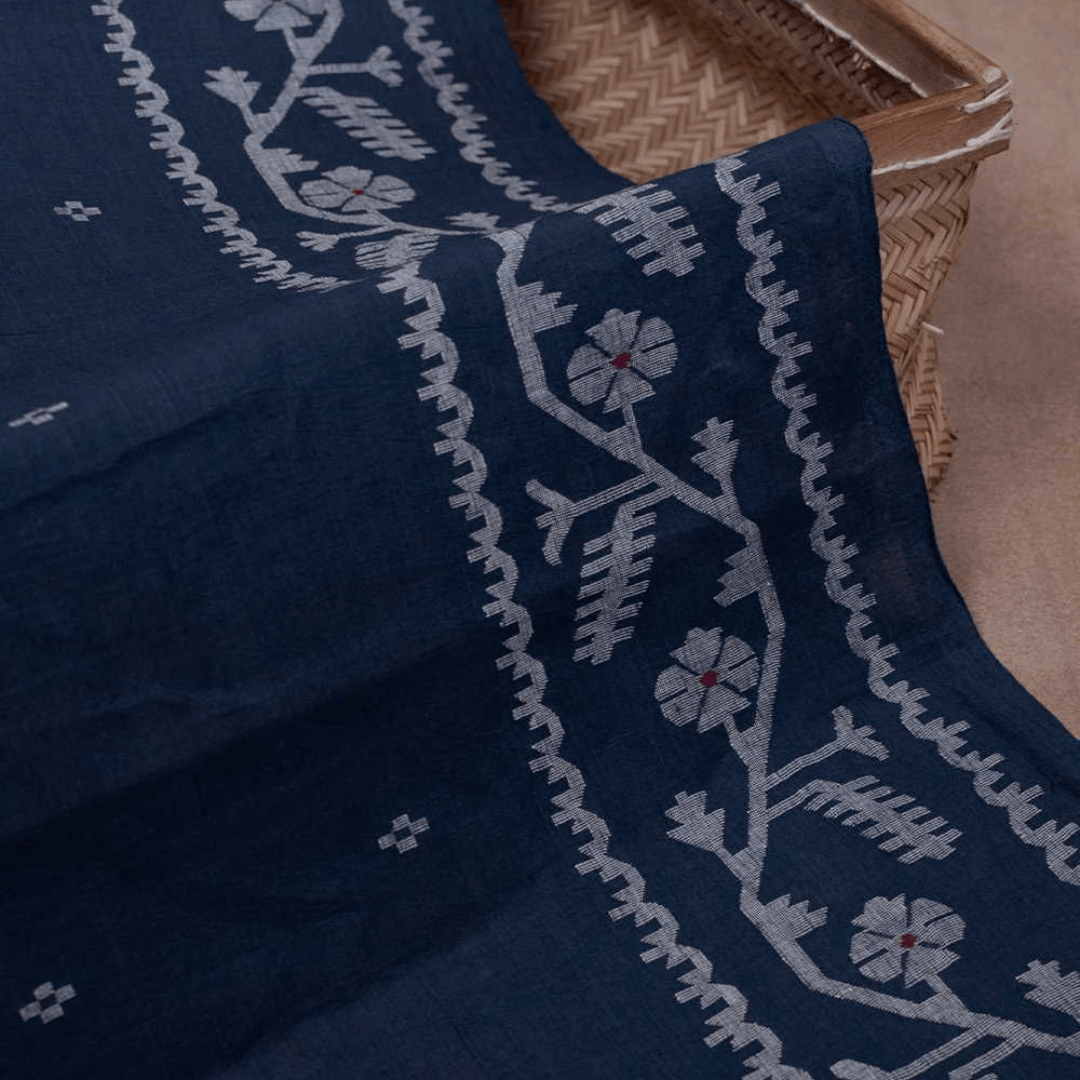
The word Jamdani comes from Persian: “Jam” meaning flower, and “Dani” meaning vase.
True to its name, Jamdani is known for its floral and geometric motifs, handwoven into fine muslin or cotton.
Originating in Bengal — today spanning parts of Bangladesh and West Bengal, India — Jamdani has been woven for over 2,000 years.
Once called the “woven air” for its gossamer lightness, it was treasured in Mughal courts and exported to royal households across Europe and Asia.
Did You Know About This?
Jamdani weaves use a yarn with a count of 200 to 250 resulting in a coarse texture which helps the motifs rise above the fabric giving it a 3d effect.
Jamdani Intricate Designs
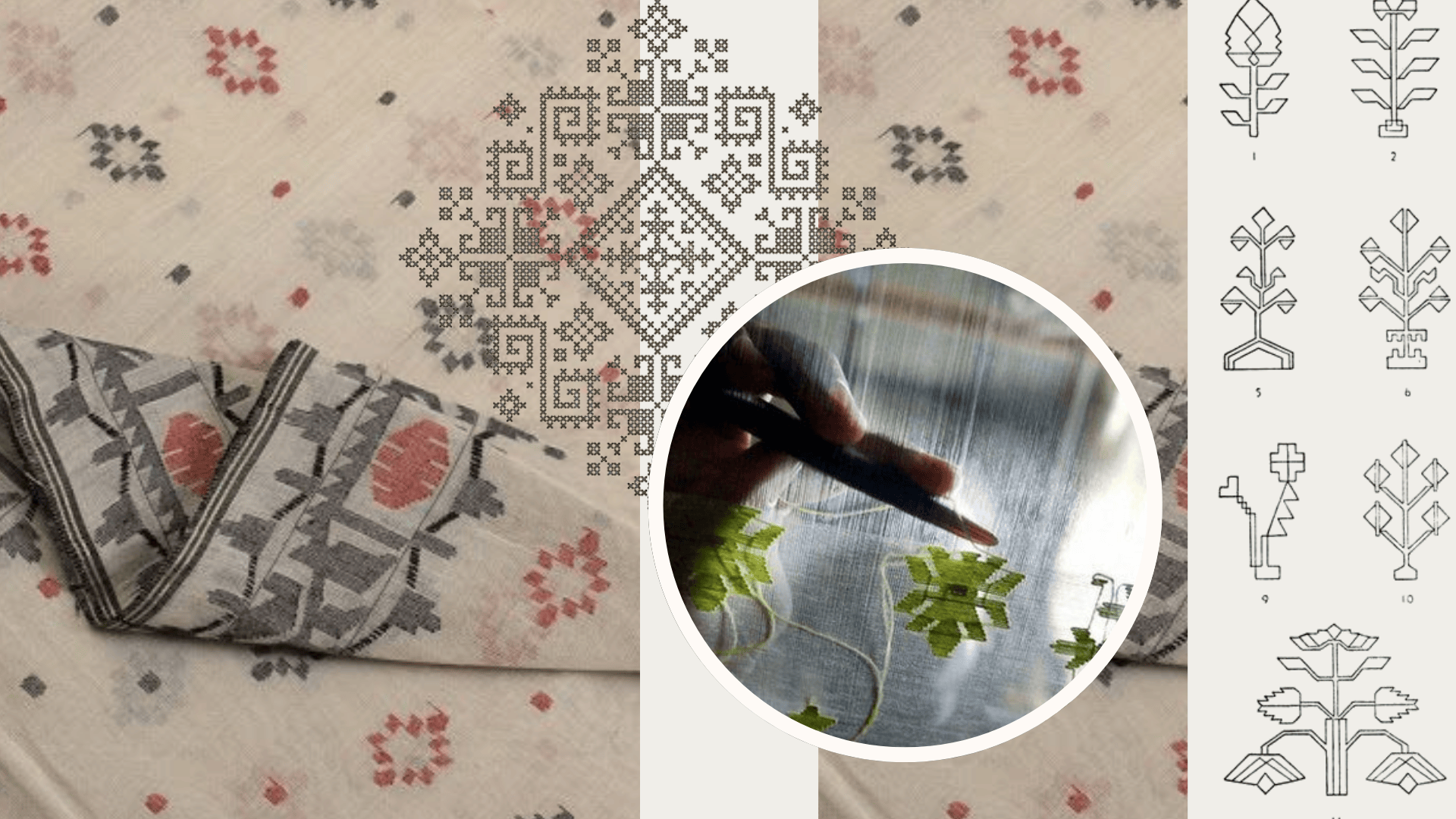
The Unparalleled Craftsmanship: The Weaving Process
The creation of a single Jamdani textile is a symphony of skill, patience, and incredible precision:
- The Design: The design, often inspired by nature (floral vines, geometric patterns, animal motifs), is either drawn onto graph paper or mentally held by the master weaver.
- The Supplementary Weft: As the primary warp and weft create the basic muslin, a second set of extra weft threads is introduced by hand. These threads, often thicker or of a contrasting material (like silk on cotton), are inserted and interwoven with the warp to form the motifs. The weaver counts each thread, turning back the weft to create the pattern.
- No Mechanical Aid: This intricate patterning is done without a loom attachment like a Jacquard mechanism. It is entirely a freehand process, guided by the artisan's eye and experience.
- The Sheer Base: The base fabric is typically a very fine, high-count cotton muslin.
- Precision & Time: Each motif is built patiently — a single saree can take months to complete.
Here's what you need to know about this UNESCO-recognized weaving pattern
Jamdani has a rich cultural and regional history. The weaving pattern was included in the UNESCO Representative List of Intangible Heritage of Humanity in 2013 and in 2016, it received the GI (Geographical Indication) tag.
Jamdani Weaving
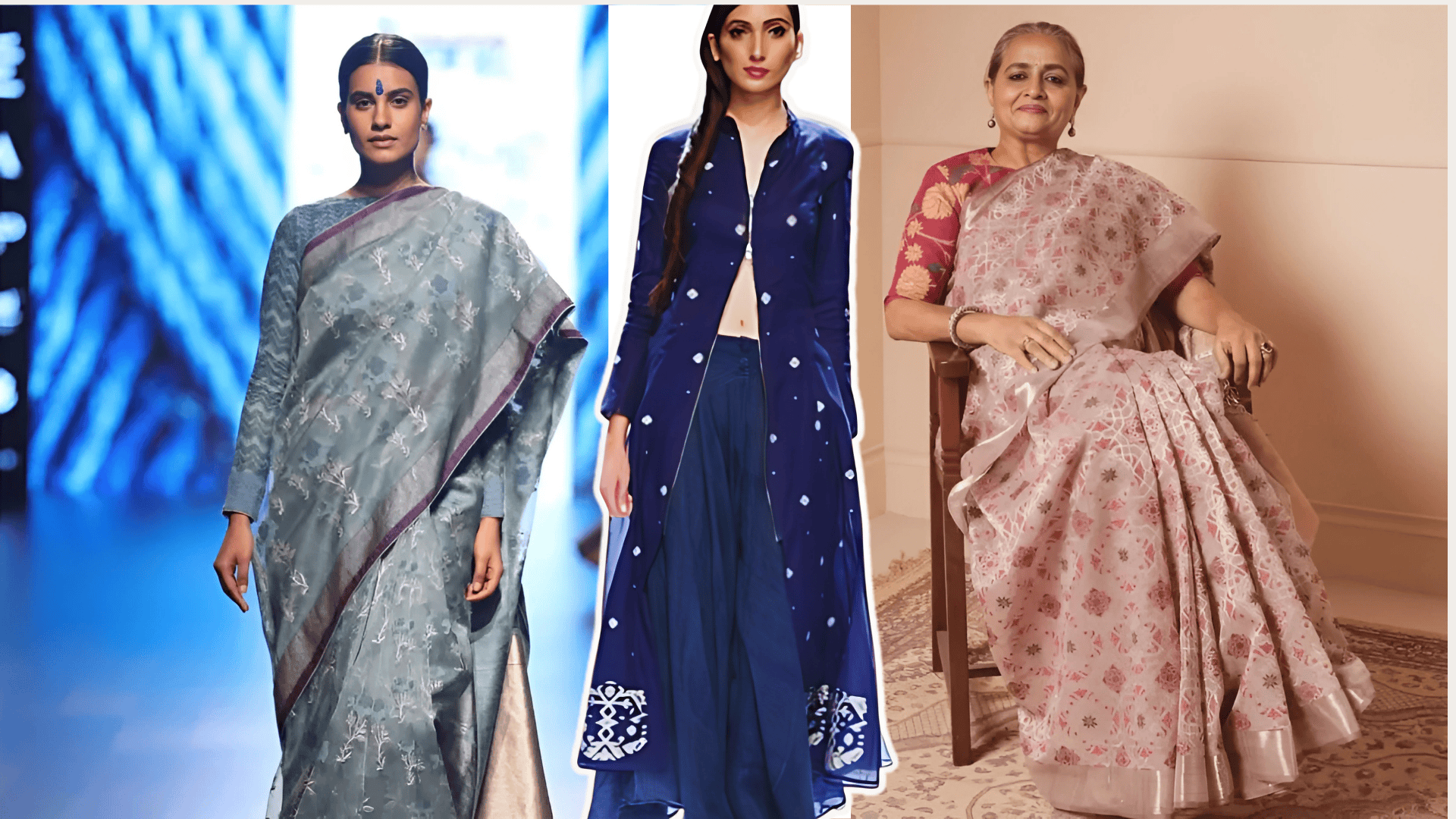
Why UNESCO Acknowledged Jamdani Textiles
- Exceptional Craftsmanship: It recognized the unparalleled skill and knowledge passed down through generations of weavers. This is a craft that cannot be easily replicated by machines.
- Cultural Significance: Jamdani is deeply embedded in the cultural fabric of Bengal. It is worn during significant life events, passed down as heirlooms, and represents a profound connection to history and identity.
- Endangered Heritage: Like many traditional handloom crafts, Jamdani faced threats from industrialization and changing consumer demands. UNESCO's recognition brought global attention and support for its preservation.
- Sustainability: By its very nature, Jamdani is a sustainable craft, relying on natural fibers, human skill, and minimal environmental impact.
The Magic of Jamdani Today
In 2025, Jamdani has found new life on global runways and sustainable fashion collections. Its lightweight elegance and sheer texture make it perfect for:
- Sarees & Dupattas – The traditional canvas of Jamdani’s artistry.
- Contemporary Apparel – Dresses, overlays, and shirts that merge tradition with modern silhouettes.
- Accessories & Homeware – Scarves, stoles, and table linens that carry artisanal motifs into everyday life.
Designers around the world are embracing Jamdani for its storytelling, texture, and sustainability — proof that this heritage craft is timeless.
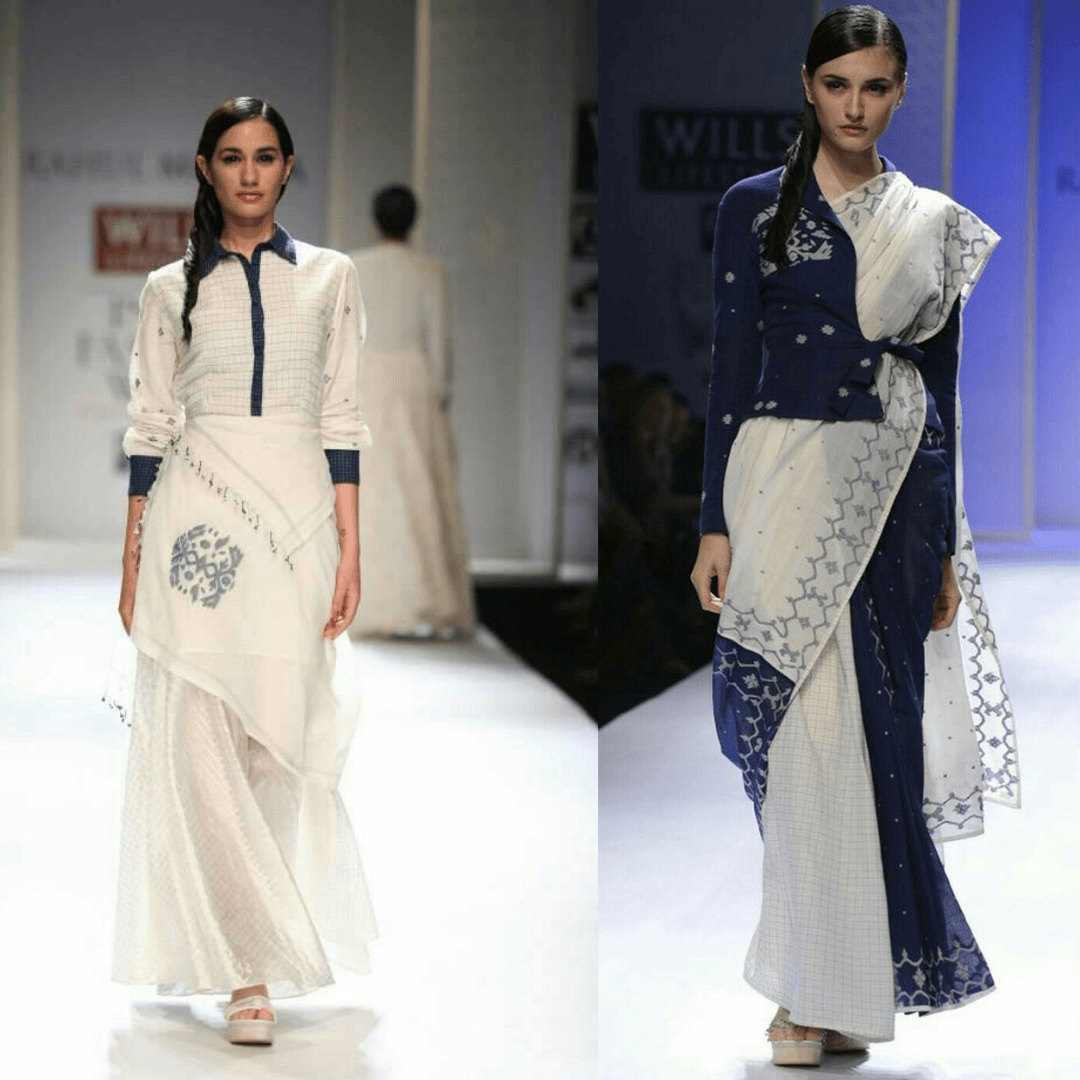
Anuprerna's Contributions
At Anuprerna, Jamdani isn’t just fabric — it’s part of our identity. We work directly with artisan clusters in Bengal, where weaving families continue this tradition with patience and pride. Our contribution includes:
- Supporting artisans with fair wages and continuous work.
- Using natural and azo-free dyes for skin- and planet-friendly fabrics.
- Innovating Jamdani beyond sarees into apparel, accessories, and homeware for global designers.
Conclusion
Jamdani is more than a textile — it is heritage woven into air. Its recognition by UNESCO isn’t just about beauty; it’s about valuing the skill, culture, and resilience of weaving communities.
In a world of fast fashion, Jamdani reminds us that true luxury lies in what is handmade, human, and timeless.
At Anuprerna, we are proud torchbearers of this tradition, ensuring that the magic of Jamdani continues to inspire designers, delight consumers, and sustain artisans for generations to come.
related questions
Why is Jamdani weaving recognized by UNESCO?
arrow_drop_downJamdani was recognized by UNESCO in 2013 as an Intangible Cultural Heritage of Humanity because it represents centuries-old craftsmanship, cultural identity, and exceptional artistry passed down through generations of Bengal’s weaver families.
How is Jamdani different from other handwoven fabrics?
arrow_drop_downUnlike embroidery or printing, Jamdani motifs are created using the extra-weft technique during weaving itself. This makes every motif an integral part of the fabric, not an addition on top.
How long does it take to weave a Jamdani fabric?
arrow_drop_downDepending on intricacy, a Jamdani saree can take 3 months to a year to complete. The weaving is extremely slow and precise, requiring teamwork and patience.
What motifs are common in Jamdani weaving?
arrow_drop_downTraditional motifs include florals, vines, geometric shapes, and paisleys. Each design has symbolic meaning, often inspired by nature or Mughal aesthetics.
More Blogs

understanding mulberry silk quality: what designers often miss and why it matters
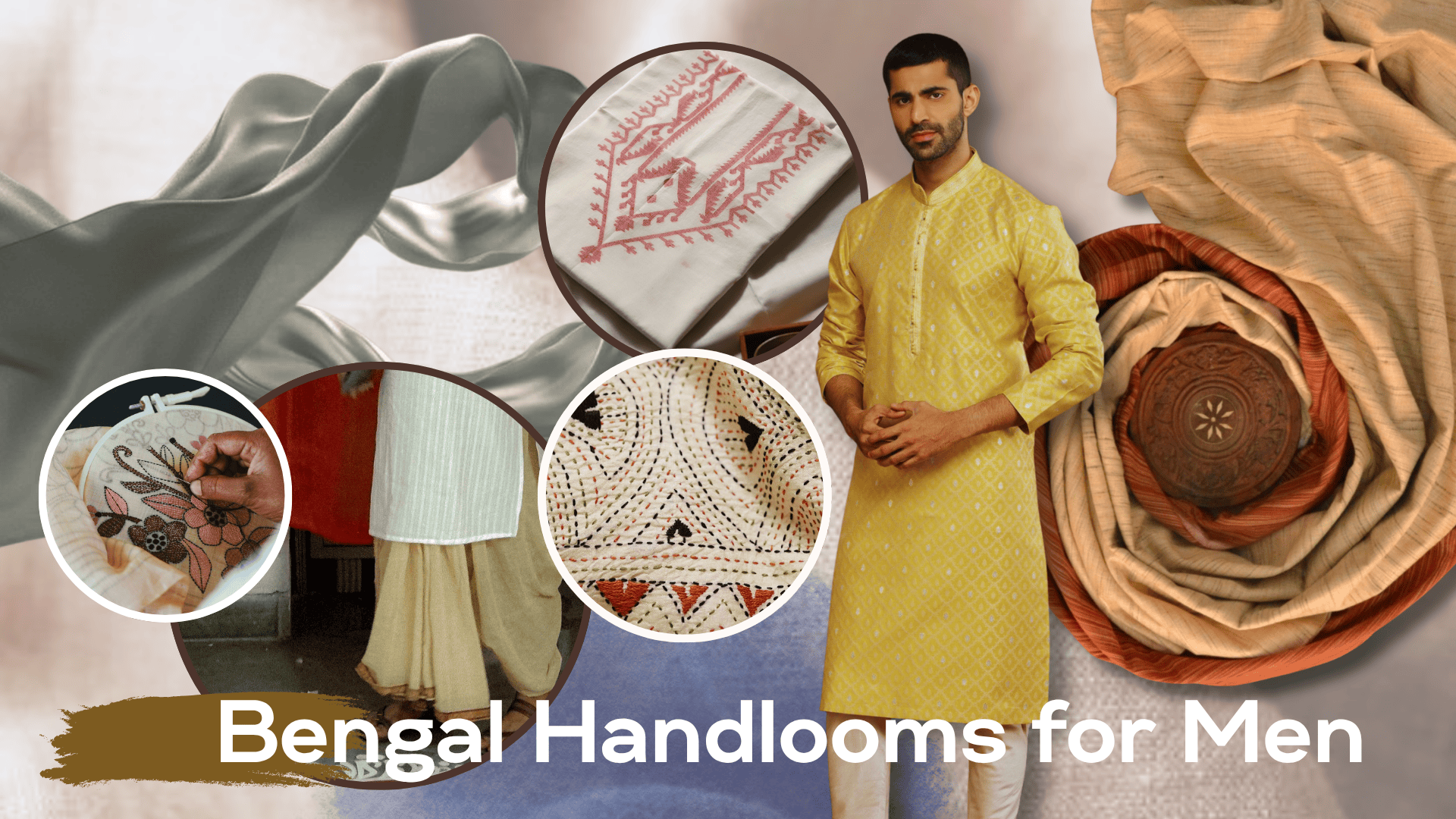
bengal looms for men: beyond the kurta
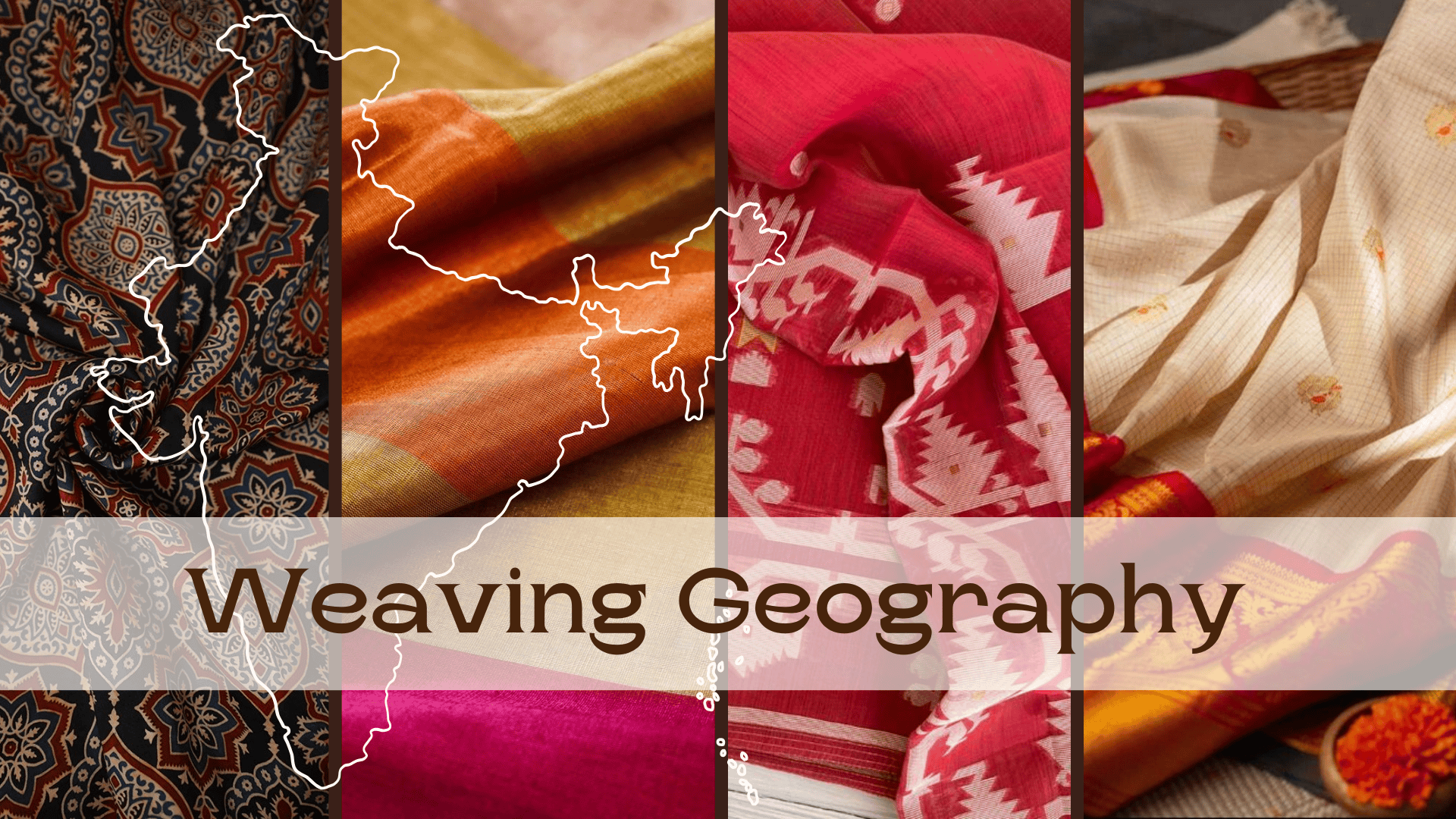
weaving geography: which district is known for which handloom fabrics
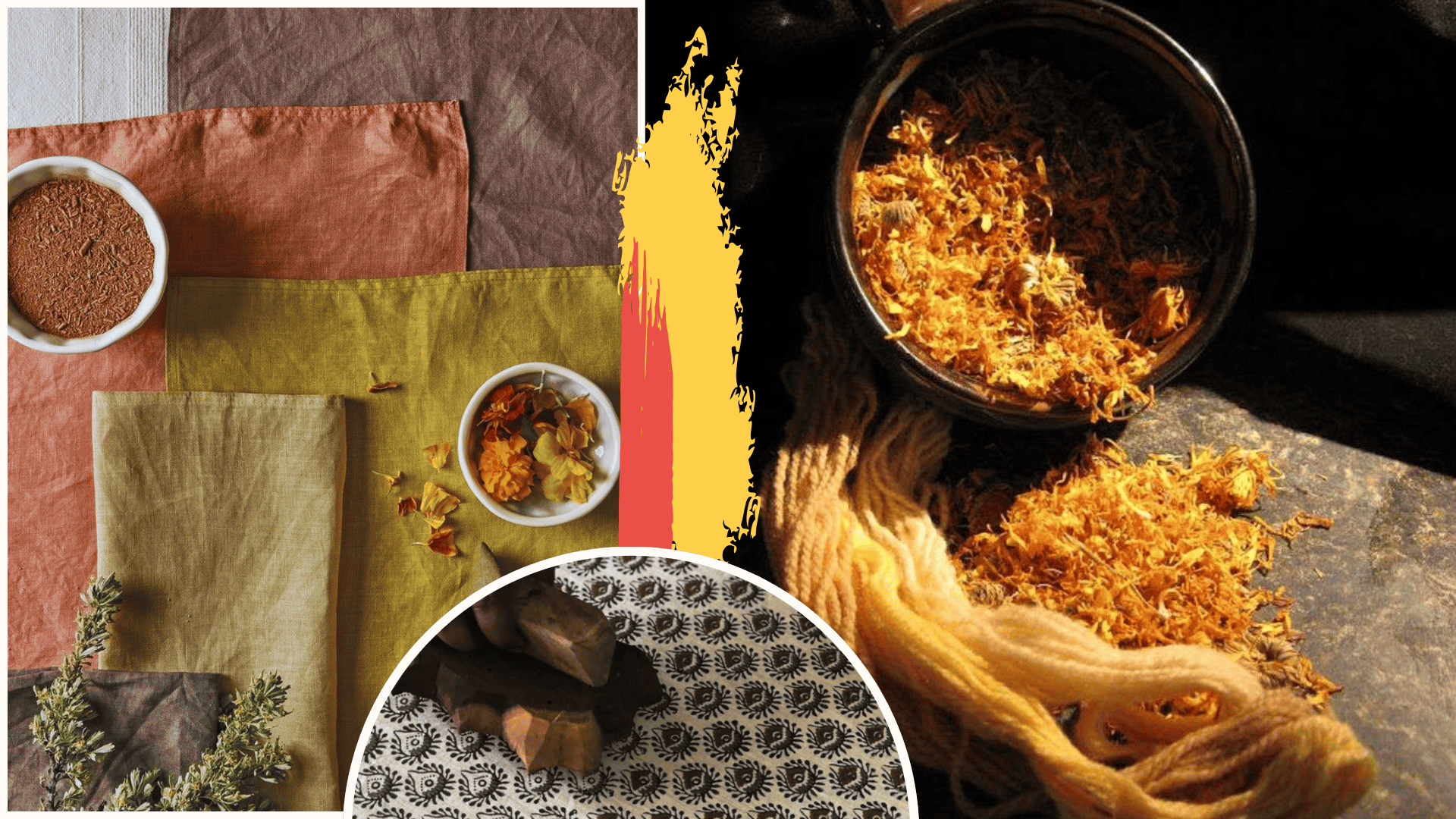
the ultimate guide to naturally dyed and block printing textiles
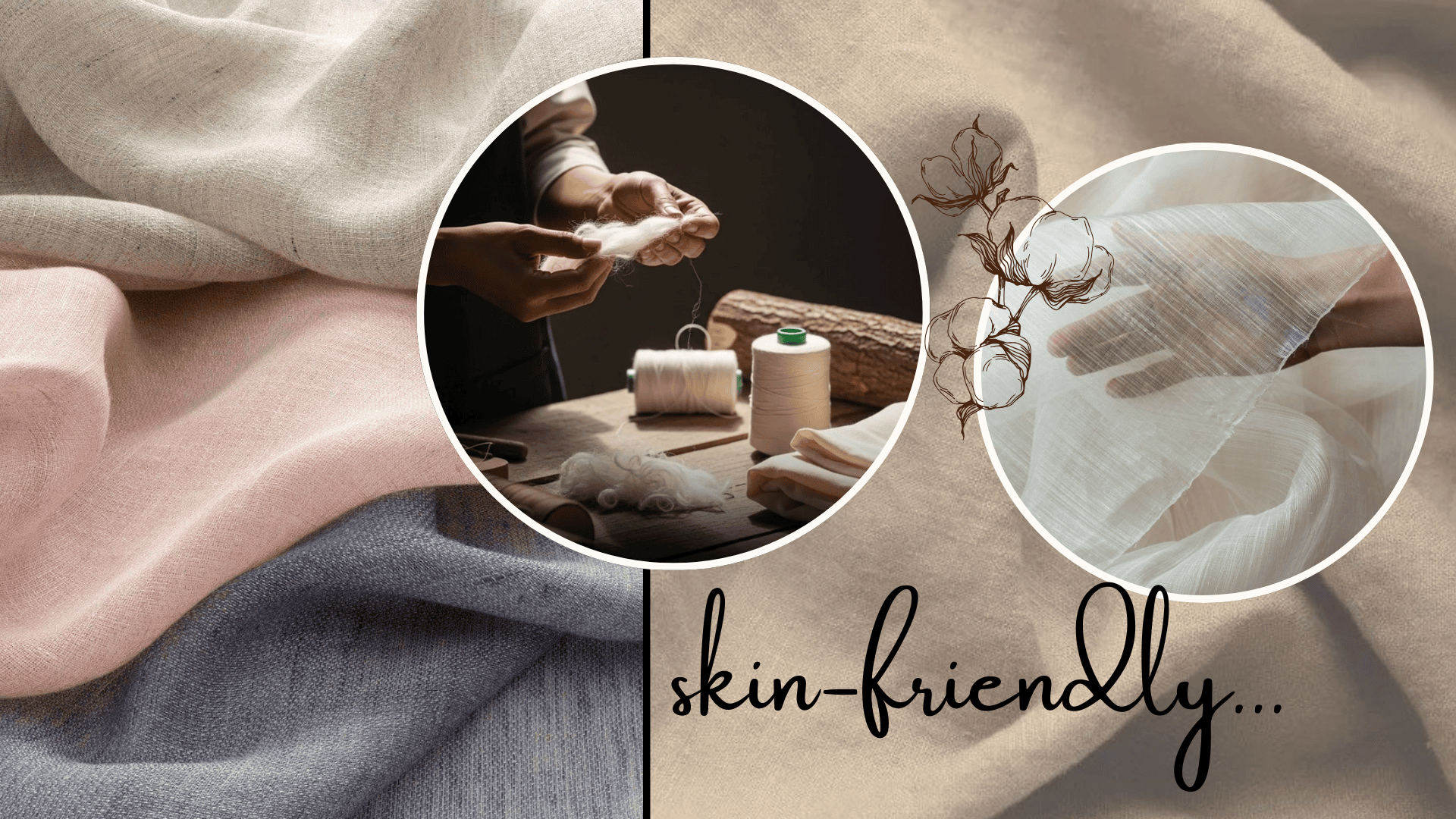
why skin-friendly textiles are the next luxury in fashion
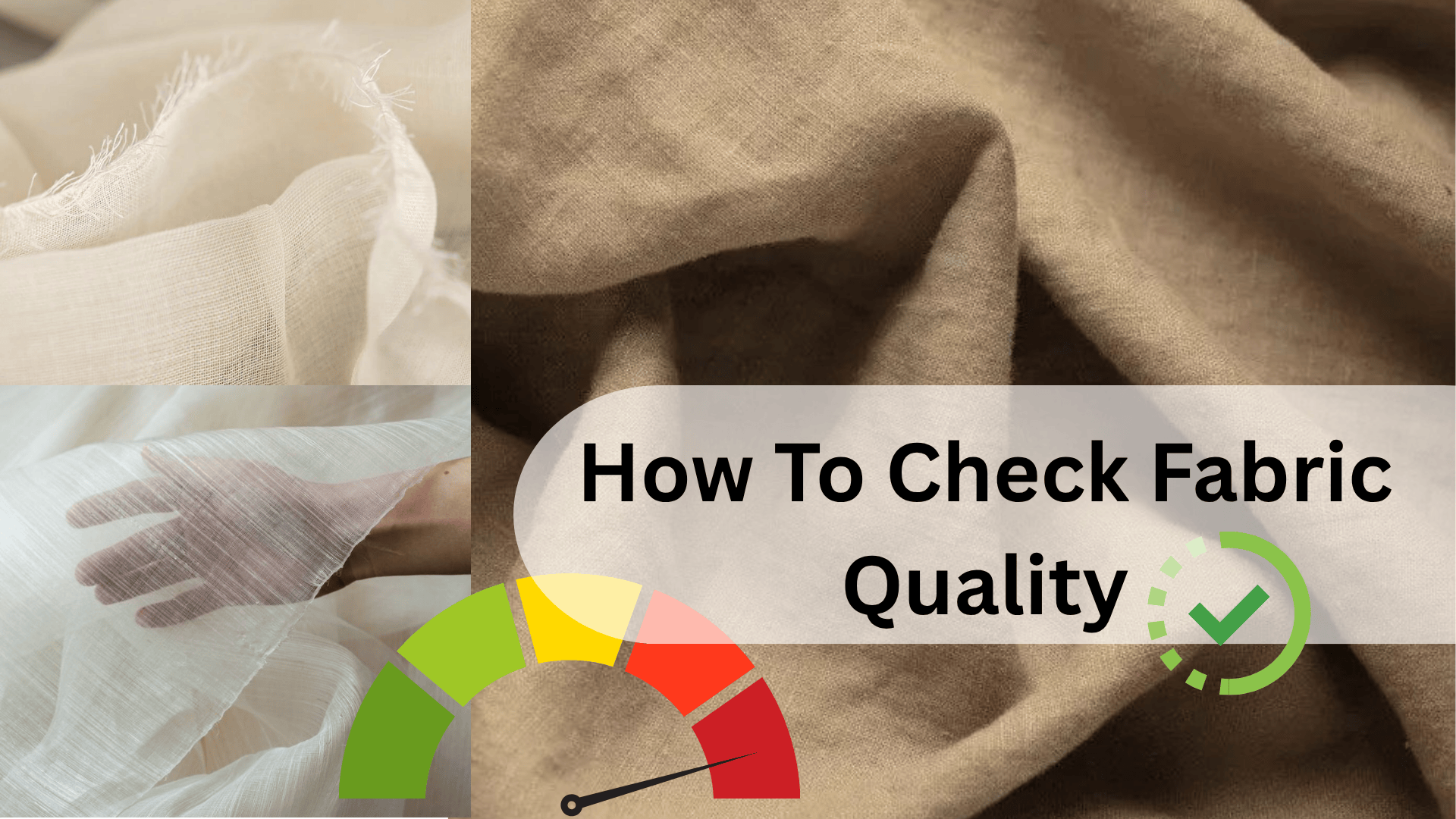
7 visual cues to identify fabric quality instantly

